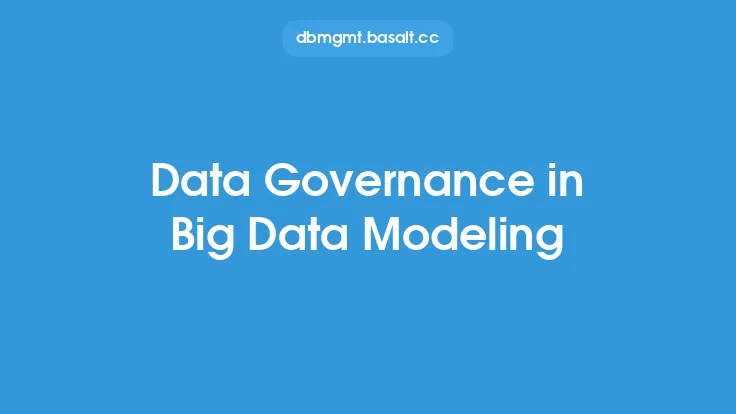The increasing volume, velocity, and variety of big data have introduced new challenges in data modeling. Traditional data modeling techniques, which were designed to handle structured and relatively small amounts of data, are no longer sufficient to handle the complexities of big data. As a result, big data modeling has become a critical aspect of big data analytics, requiring specialized techniques and tools to extract insights and value from large and diverse datasets.
Introduction to Big Data Modeling Challenges
Big data modeling challenges arise from the unique characteristics of big data, including its high volume, velocity, and variety. The sheer size of big data makes it difficult to store, process, and analyze using traditional data modeling techniques. Additionally, the velocity of big data, which refers to the speed at which it is generated and processed, requires data models to be highly scalable and flexible. The variety of big data, which includes structured, semi-structured, and unstructured data, also poses significant challenges in terms of data integration and consistency.
Data Complexity and Variety
One of the major challenges in big data modeling is handling the complexity and variety of big data. Big data comes in many forms, including text, images, videos, and sensor data, each with its own unique characteristics and requirements. For example, text data may require natural language processing techniques, while image and video data may require computer vision techniques. Furthermore, big data often contains a high degree of noise, errors, and inconsistencies, which can make it difficult to integrate and analyze.
Scalability and Performance
Big data modeling also requires highly scalable and performant data models that can handle large volumes of data and high-speed data processing. Traditional data modeling techniques, which were designed for relatively small amounts of data, are often unable to scale to meet the demands of big data. As a result, big data modeling requires the use of distributed computing architectures, such as Hadoop and Spark, which can process large amounts of data in parallel.
Data Integration and Consistency
Another significant challenge in big data modeling is data integration and consistency. Big data often comes from multiple sources, each with its own unique format and structure. Integrating these diverse data sources into a single, unified view requires sophisticated data integration techniques, such as data warehousing and ETL (extract, transform, load). Additionally, ensuring data consistency across multiple sources and systems is critical to maintaining data quality and accuracy.
Data Modeling Techniques for Big Data
To address these challenges, several data modeling techniques have been developed specifically for big data. These techniques include:
- Entity-relationship modeling: This technique is used to model the relationships between different entities in a big data system.
- Dimensional modeling: This technique is used to model big data as a series of interconnected dimensions, such as time, location, and customer.
- Graph modeling: This technique is used to model big data as a network of interconnected nodes and edges.
- NoSQL modeling: This technique is used to model big data in NoSQL databases, such as key-value stores, document databases, and graph databases.
Big Data Modeling Tools and Technologies
Several tools and technologies have been developed to support big data modeling, including:
- Hadoop: An open-source, distributed computing framework for processing large amounts of data.
- Spark: An open-source, in-memory computing framework for processing large amounts of data.
- NoSQL databases: Such as MongoDB, Cassandra, and Neo4j, which are designed to handle large amounts of unstructured and semi-structured data.
- Data integration tools: Such as Talend, Informatica, and Microsoft SQL Server Integration Services, which are used to integrate data from multiple sources.
Best Practices for Big Data Modeling
To ensure successful big data modeling, several best practices should be followed, including:
- Define clear goals and objectives: Clearly define the goals and objectives of the big data modeling project.
- Understand the data: Take the time to understand the characteristics, quality, and limitations of the data.
- Choose the right tools and technologies: Select the tools and technologies that best fit the needs of the project.
- Iterate and refine: Iterate and refine the data model as needed to ensure it meets the requirements of the project.
Conclusion
Big data modeling is a critical aspect of big data analytics, requiring specialized techniques and tools to extract insights and value from large and diverse datasets. By understanding the challenges and complexities of big data modeling, and by using the right techniques, tools, and technologies, organizations can unlock the full potential of their big data and gain a competitive advantage in the marketplace.





